Flowers look stunning in your garden, but you can combine herbs with them to make them more attractive. With colorful flowers and plain-looking herbs, it gives a multi-faceted-looking garden.
Though it gives a beautiful display, merging herbs and flowers with the same needs is also important. Here we have listed herbs and flowers that grow best together.
Zinnias
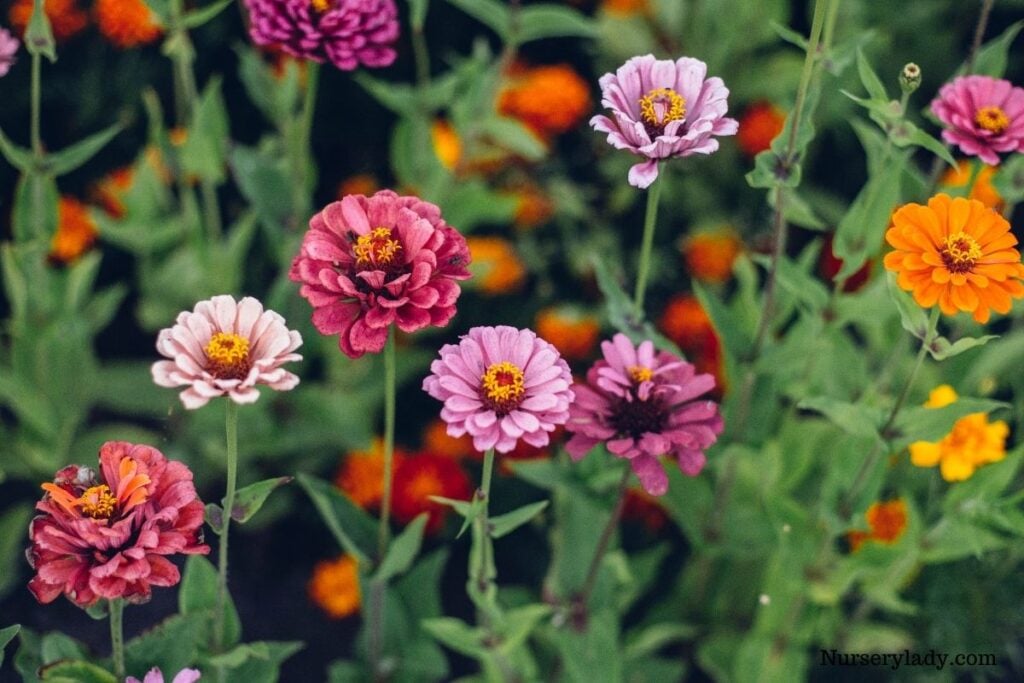
Zinnias are easy-to-grow plants that can bloom with minimal care. They have medicinal properties and can be grown with herbs like thyme. They will look even prettier when combined with plain thymes. They have green leaves and flowers in bold colors.
Light: Zinnias like sunny locations and may suffer in low light. Keeping them in sunny locations will promote their growth and blooms and also keep fungal problems at bay.
Watering: Zinnias likes to be on the drier side. They can stay in long drought periods without complaining. Only water them after long, dry spells.
Fertilizer: Feed Zinnias once in the growing period with balanced fertilizer or compost. They can even grow in poor soil without feeding and still thrive.
General care: Zinnias can grow and bloom in the hottest of summers. Deadheading will lead to longer blooming periods.
Caladiums
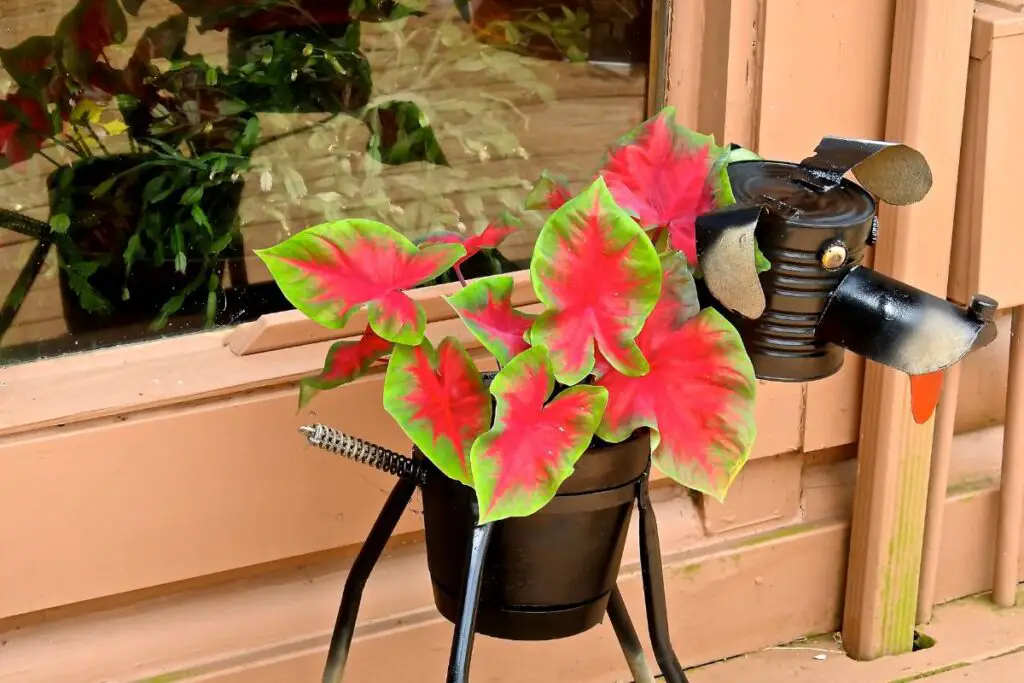
Caladiums have heart-shaped patterned foliage in an array of colors. They produce flowers in spring, summer, and fall. They can be grown in herbs too. They complement many herbs due to their beautiful foliage. They are easy to grow and maintain.
Light: Caladiums grow best in indirect bright light or partial shade. If you are keeping them in full sun, then some shade to protect them from the intense sun.
Watering: Water caladiums to keep the soil evenly moist. Water, when the soil is dry to touch because letting them dry will lead to the yellowing of leaves. Reduce watering in cooler months.
Fertilizer: Feed caladiums monthly throughout the growing season. Use a balanced liquid fertilizer or slow-release pellets at your convenience.
General care: Caladiums like temperatures between 70°F and 75°F. Keep the humidity level from medium to high.
Pansies
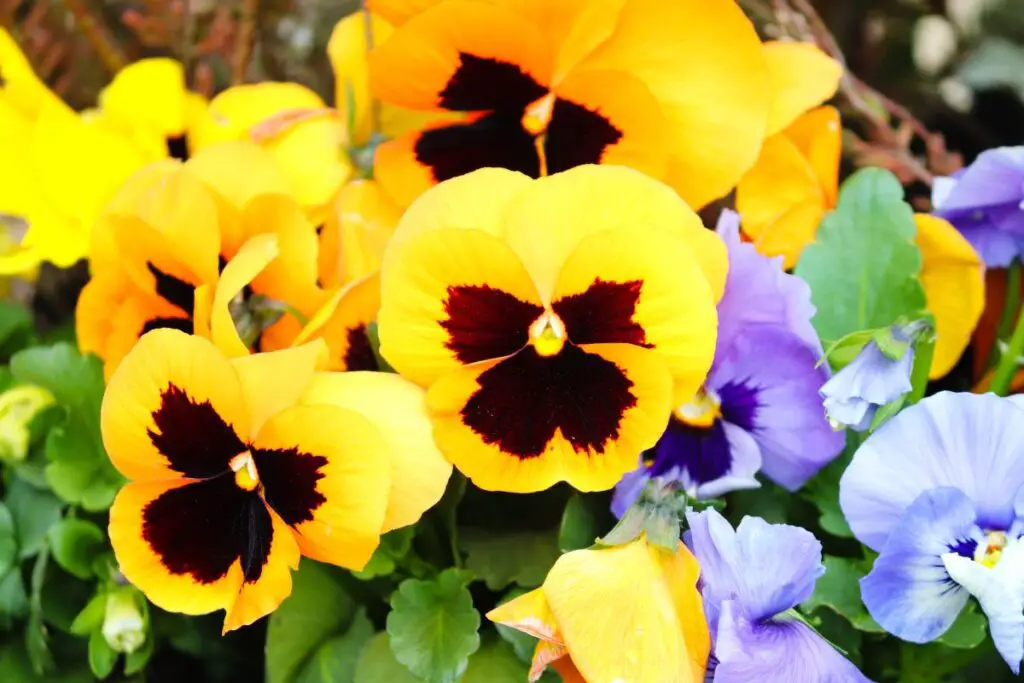
Pansies are beautiful plants with bright-colored flowers with face-like markings on the center. They also become a great companion for herbs like oregano. They have the same light needs, and pansies will brighten the dull-looking oregano.
Light: Pansies bloom best in direct sun and grow well in partial shade too. Please keep them in good lighting for better blooming. They may not develop well in low light.
Watering: Pansies like regular watering but never keep the soil soggy. Proper drainage is crucial to avoid any watering-related problems.
Fertilizer: Feed pansies with balanced liquid fertilizer by diluting them to half the recommended strength. Avoid too much feeding as it can make the plant leggy.
General care: pansies prefer cool temperatures and will decline as the temperature increases. Deadheading faded flowers will encourage more blooming.
Looking for gardening supplies? We have tested 100's of products before recommending them to you guys. Check out our best pick below:
| Image | Gardening Supplies | Best Price? |
|---|---|---|
 Top
Top Top
Top | Raised Garden Bed Kit | Check On Amazon |
 | XLUX Soil Moisture Meter, Plant Water Monitor, Soil Hygrometer Sensor for Gardening, Farming, Indoor and Outdoor Plants, No Batteries Required | No Results |
 Top
Top Top
Top | 82 Pcs Garden Tools Set and Extra Succulent Tools Set | Check On Amazon |
 | Joeys Garden Expandable Garden Hose with 8 Function Hose Nozzle, Lightweight Anti-Kink Flexible Garden Hoses, Extra Strength Fabric with Double Latex Core, (50 FT, Black) | No Results |
 Top
Top Top
Top | Dual Chamber Compost Tumbler | Check On Amazon |
 Top
Top Top
Top | Sunnyglade Plant Stakes | Check On Amazon |
 Top
Top Top
Top | Organic Cold Pressed Neem Seed Oil | Check On Amazon |
 Top
Top Top
Top | Mighty Mint Gallon :-Insect and Pest Control Peppermint Oil | Check On Amazon |
 Top
Top Top
Top | Scotts DiseaseEx Lawn Fungicide | Check On Amazon |
 Top
Top Top
Top | Jacks Classic 20-20-20 All Purpose Fertilizer | Check On Amazon |
 Top
Top Top
Top | 30,000 Seeds Pollinator Attracting Wildflower Mixture | Check On Amazon |
 Top
Top Top
Top | Survival Vegetable Seeds Garden Kit-Over 16,000 Seeds | Check On Amazon |
Hostas

Hostas are popular among planters for their easygoing attitude. They produce flowers and have attractive foliage. They are shade-loving plants, due to which they are grown with thyme. They both complement each other and create a beautiful visual.
Light: Hostas can thrive in full shade, but keeping them in partial shade will keep them in the best health. The morning sun is great for them and will keep them happy and healthy. Too much sun can cause sunburn, dullness, etc.
Watering: Water hostas at regular intervals and ensure proper drainage. Check the soil before watering, dig a finger in the soil, and water only if the soil feels dry. Avoid long periods of drought as it can lead to weak plants.
Fertilizer: Hostas will benefit from feeding in the growing season. Feed them with slow-release fertilizer at the beginning of the growing period and balanced liquid fertilizer through the growing season. Avoid feeding them in the dormant months.
General care: Hostas appreciate normal indoor temperatures. They are not fussy about humidity. Protect them from strong winds and extreme cold.
Roses
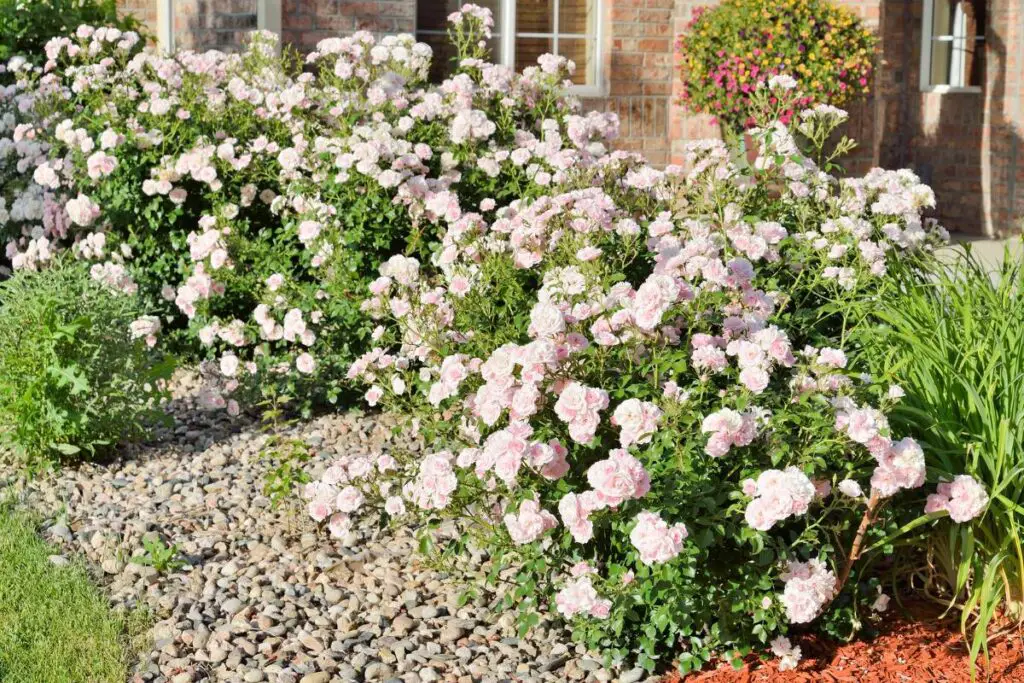
Roses are popular flowers that are easy to maintain. There are more than 100 species of roses. You will find love for roses in almost every plant parent. Roses can also be planted with chives as chives keep beetles away, which harms roses. Proper care is essential for healthy growing roses.
Light: Roses appreciate good lighting to grow and develop. Keep them in the morning sun for at least 6 hours. The afternoon sun is intense and can cause sunburn.
Watering: Roses need an abundance of water to grow well. During hot months, water them twice a week. Water them thoroughly and ensure proper drainage.
Fertilizer: Feed roses with balanced rose food. Feed them when they are actively growing and avoid them in dormant months m
General care: Roses like warm to hot temperatures. They suffer in cold temperatures. They need some protection from cold winds.
Marigolds
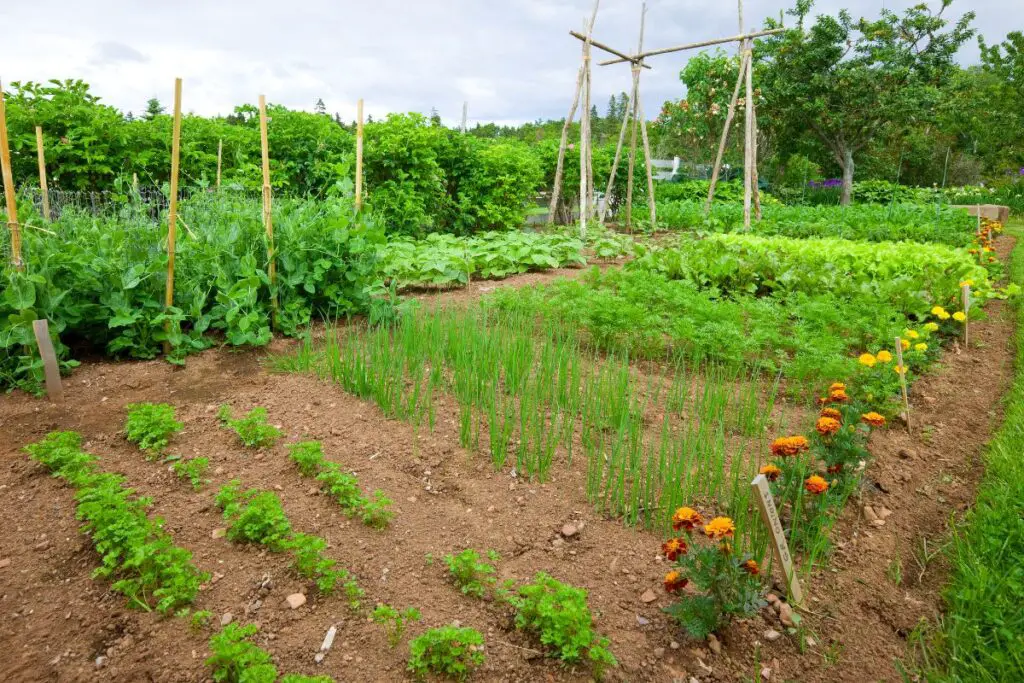
Marigolds are beautiful flowers with warm colors. They come in different sizes and forms. Since they complete their life cycle in a single growing season, they mature in a few months. They can be planted with herbs like basil, as they are both strong pest deterrents.
Light: Marigolds grow best in full sun. Keep them in a location where they can receive 6-8 hours of sun. A shady location will inhibit their growth and flowering.
Watering: Water marigolds in regular intervals when they are young. Keep the soil moist until roots are developed. Once established, they will be drought tolerant but will appreciate proper watering.
Fertilizer: Feed marigolds only if they are growing in poor soil. In rich soil, they do not need any feeding to grow. Too much feeding can be harmful and have adverse effects.
General care: Marigolds grow best in warm to cool temperatures. They can tolerate all humidity levels, but high humidity can lead to powdery mildew. Keep the airflow and sunlight in such conditions.
Hyssop
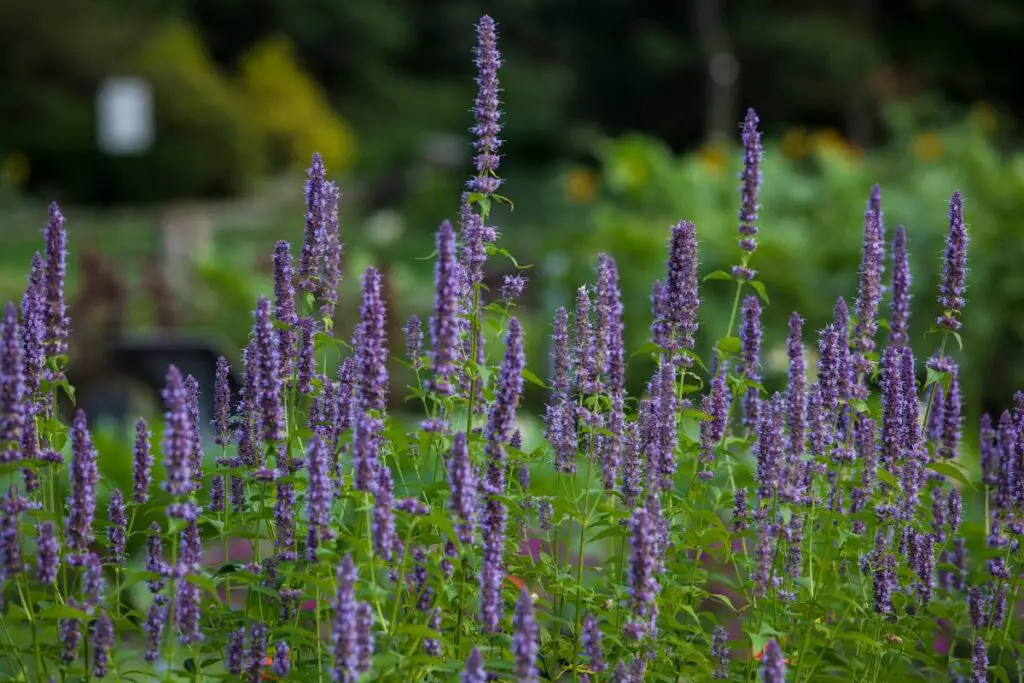
Hyssop produces flower spikes with scented green leaves. Their flowers come in pink, cream, powder blue, and red-violet colors. They bloom from mid to late summer until fall. They can also be planted with mint, and they both repel eats. They can be planted together on the border or as a divider.
Light: Hyssop thrives in full sun. Keep in full sun for at least 6 hours on most days. They can also grow in low light but will become lanky.
Watering: Water hyssop when the soil is halfway dry. Do not let the soil dry completely when they are young. Once they have developed roots, they become drought-tolerant. Watering when the soil is dry is enough.
Fertilizer: Fertilize hyssop with compost in early spring. You can simply sprinkle it around its base. Do not overfeed, as it can harm the plant.
General care: Hyssop likes warm to cool temperatures. Deadheading spent flowers will encourage blooming. Prune in early spring for bushier plants.
Asters
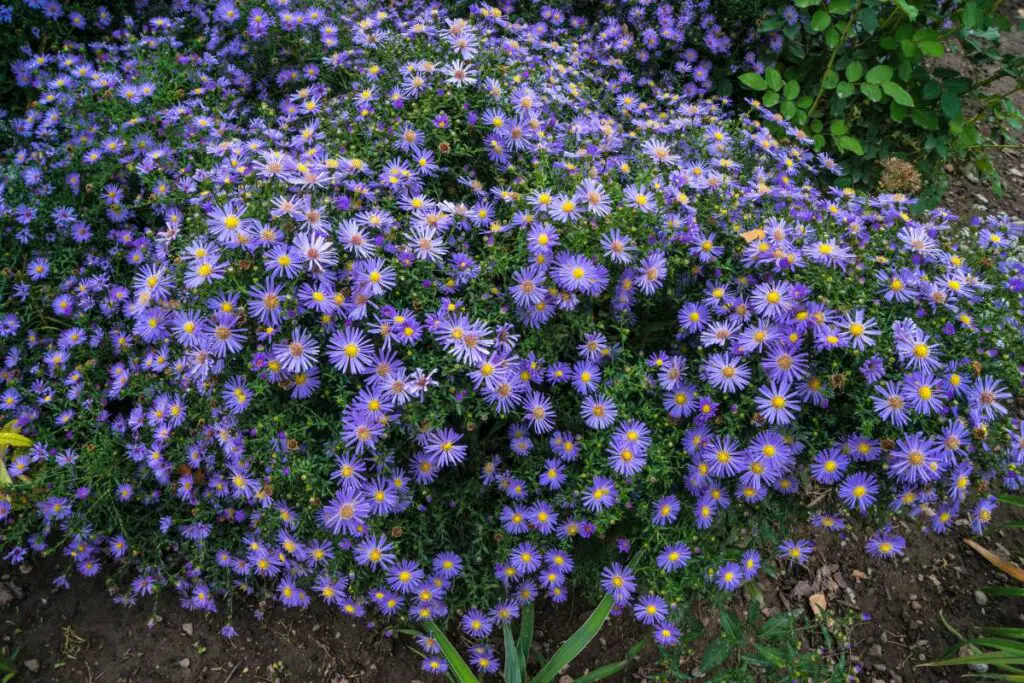
Asters produce beautiful flowers that bloom from August through October. They flower in different colors, like purple, pink, blue, and white. They are well-grown with herbs like chives displaying a beautiful sight for planters. Chives also help to keep pests off the asters.
Light: Asters should be kept in an area with 6-8 hours of direct sun. Low light and shady locations will inhibit their growth and blooms.
Watering: Asters like consistently moist soil but never saturated it. Water at the base of the plant and avoid overhead watering. Ensure proper drainage and airflow.
Fertilizer: Fees Asters balance flower food monthly from spring till the blooms begin to open. Stop feeding in August, as too much feeding can shorten their blooming period.
General care: Asters prefer cool temperatures and can withstand frost. They do not have any humidity needs and can grow in all humidity levels.
Bergamot
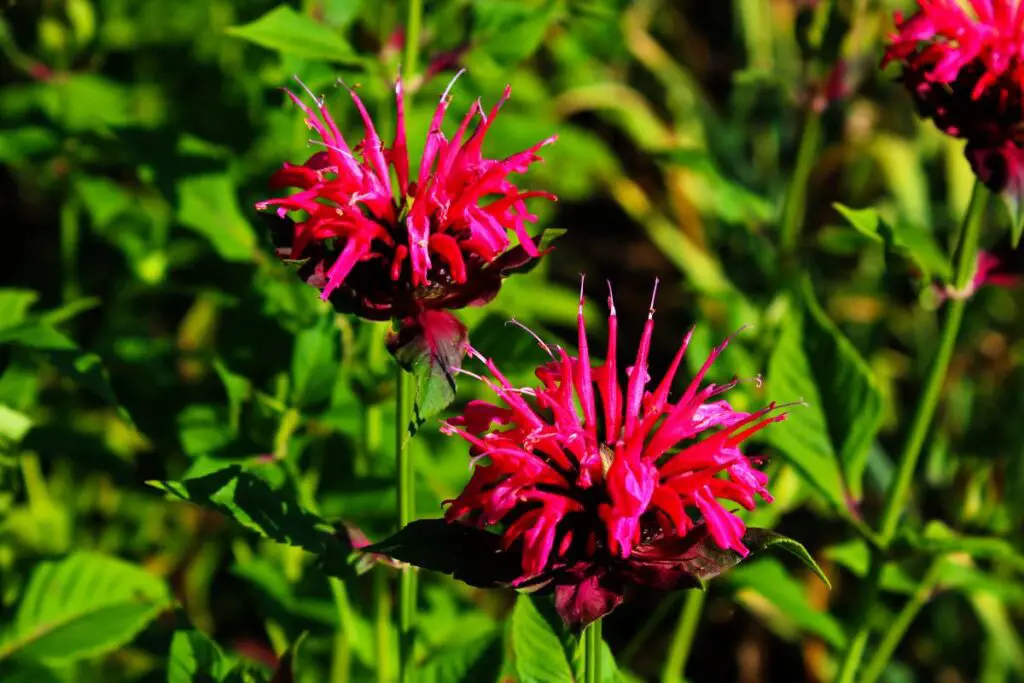
Bergamot produces tubular flowers in colors like pink, scarlet, purple, etc. They have aromatic leaves and spiky blooms. They grow rapidly and grow up to 4 feet in height. Bergamot can be grown with leafy parsley. They are both flexible to different conditions and complement each other look-wise.
Light: Bergamot can grow in all light conditions but thieves in full sun. Though too much shade can weaken the plant and lead to leggy growth. Some shade in the afternoon intense sun is good for them.
Watering: Water bergamot at regular intervals as they enjoy wet soil. Never let its soil dry out before watering. Keep it well-watered with proper drainage.
Fertilizer: Bergamot can grow and develop without feeding. You can feed them with balanced liquid fertilizer if you like. Feed only in the spring to promote flowering.
General care: Bergamot can grow in all humidity and temperatures. Protect them in freezing temperatures. Deadhead flowers after blooming for prolonged blooming.
Foxgloves
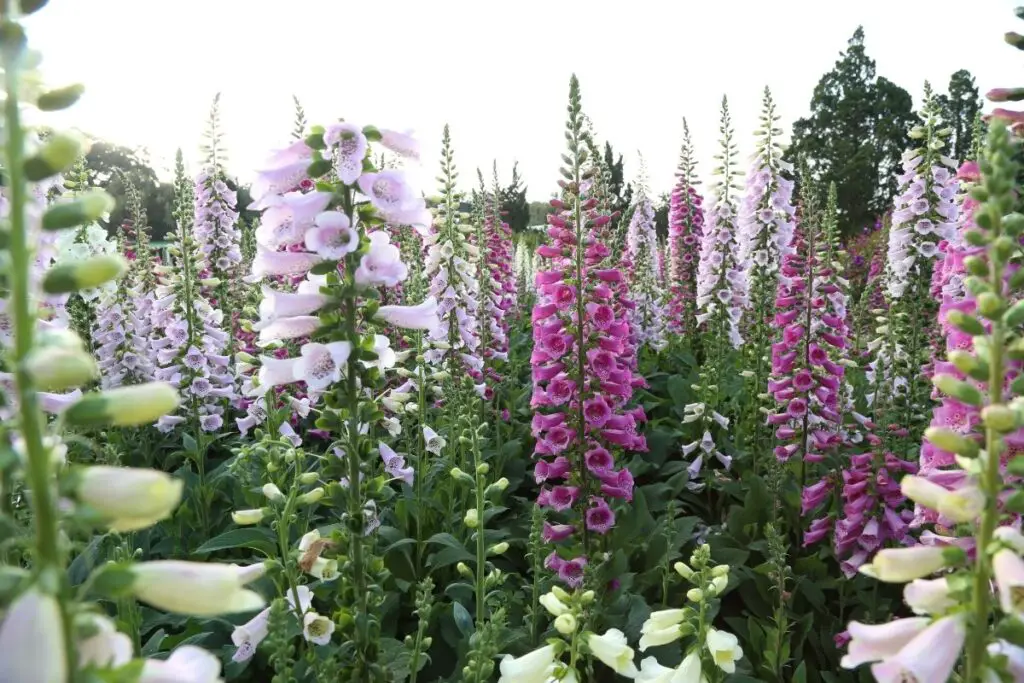
Foxglove is an eye-catching plant producing tubular flowers with colorful speckles. They are fast-growing and bloom in the second year of planting. They can be planted with marjoram giving a striking appearance with plain-looking marjoram.
Light: Foxgloves grow well in full sun to partial shade. If the sun is too strong, give the plant some shade. Too low light will deter their growth and flowering.
Watering: Foxgloves like moist soil but not soggy. In soggy soil, they can become susceptible to root rot, crown rot, etc. Water the plant when the soil is halfway dry. Water deeply and allow the excess water to drain out.
Fertilizer: Foxgloves can thrive without feeding if growing in rich soil. However, plants growing in poor soil will appreciate a layer of well-decomposed mulch to boost nutrient content in the soil.
General care: Foxgloves like cool temperatures and can thrive in all humidity levels. They suffer in too high temperatures, i.e., above 90°F.
Petunias
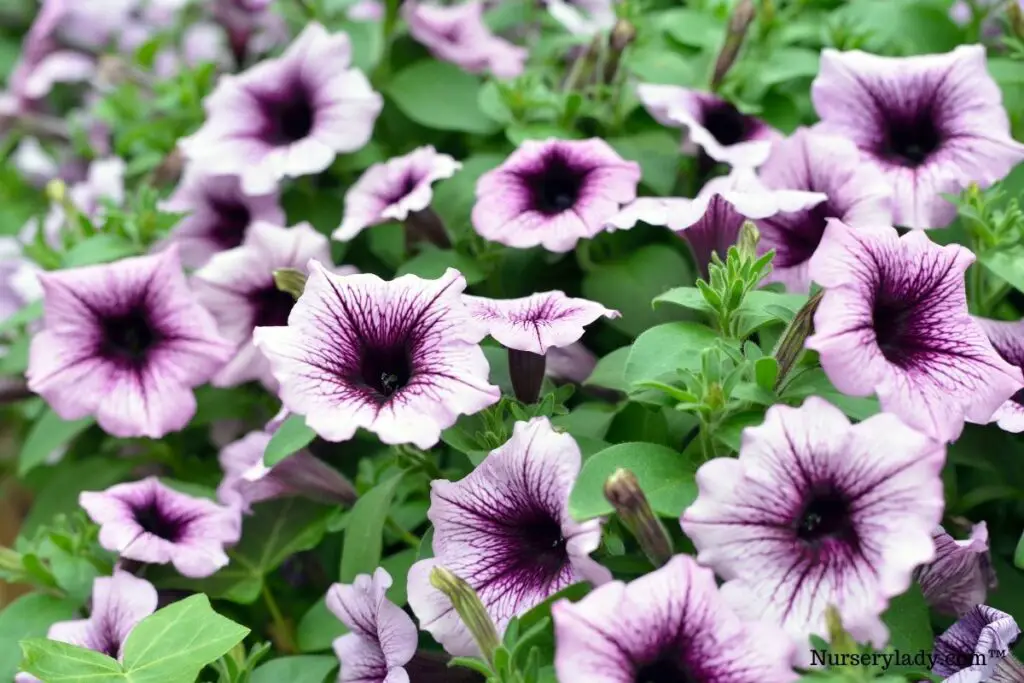
Petunias are beautiful plants with trumpet-shaped blooms. They have flowers in almost all colors except for blue. Herbs like sage can also accompany them. Ssbthey both share the same sun needs and look even more attractive together.
Light: Petunias prefer direct sun exposure for at least 6 hours daily. On hot summer days, you can give them some shade for relief.
Watering: Water Petunias in regular intervals to keep the soil evenly moist. They appreciate moist soil but not soggy conditions. Too much watering can lead to leggy plants and root rot.
Fertilizer: Feed Petunias while planting with a portion of well-balanced food. You can compost in the soil for an extra boost. Feed them throughout the growing season with a balanced fertilizer.
General care: Petunias prefer temperatures between 60°F and 75°F. They can withstand temperature levels down to 40°F. They grow best in low to average humidity.
Bluebells
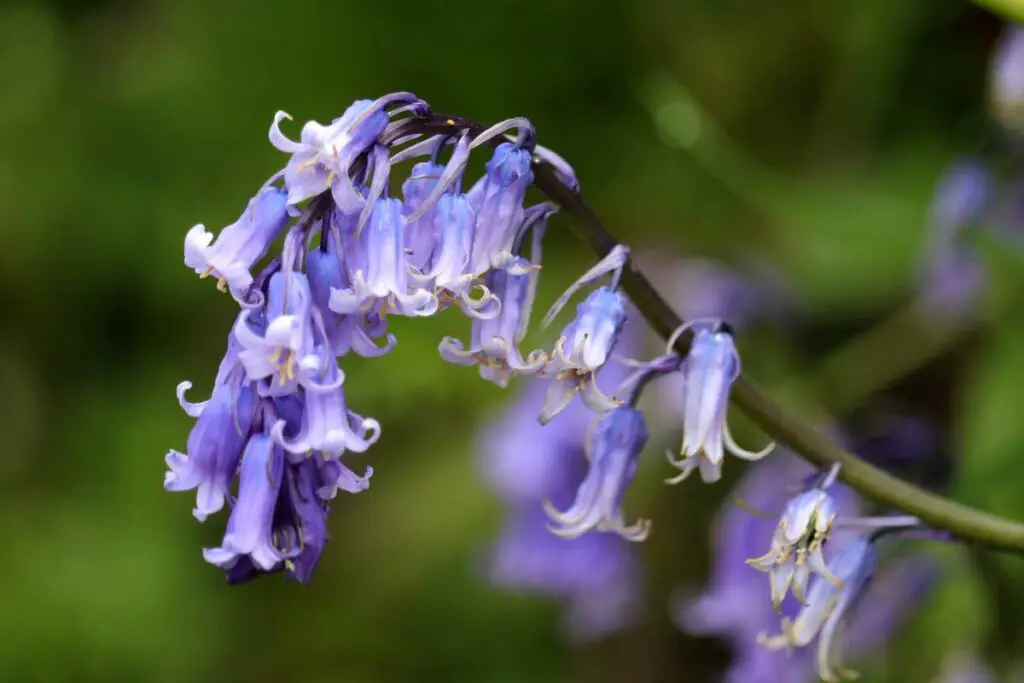
Bluebells produce attractive bell-shaped flowers in deep blue color. They are easy to grow and low maintenance. They can be combined with herbs like winter savory, thyme, chives, rosemary, etc.
Light: Bluebells like partial shade and appreciate some shade in especially hot summer. They can also grow in full sun to full shade.
Watering: Water bluebells when the top few inches are dry. More watering is required when the plant is young, and mature plants need light watering.
Fertilizer: Feed bluebells when the bud appears. Use high-potassium fertilizer to boost growth and blooms.
General care: Bluebells like warm temperatures and may suffer in freezing temperatures. Deadheading will encourage more blooming.
Cosmos
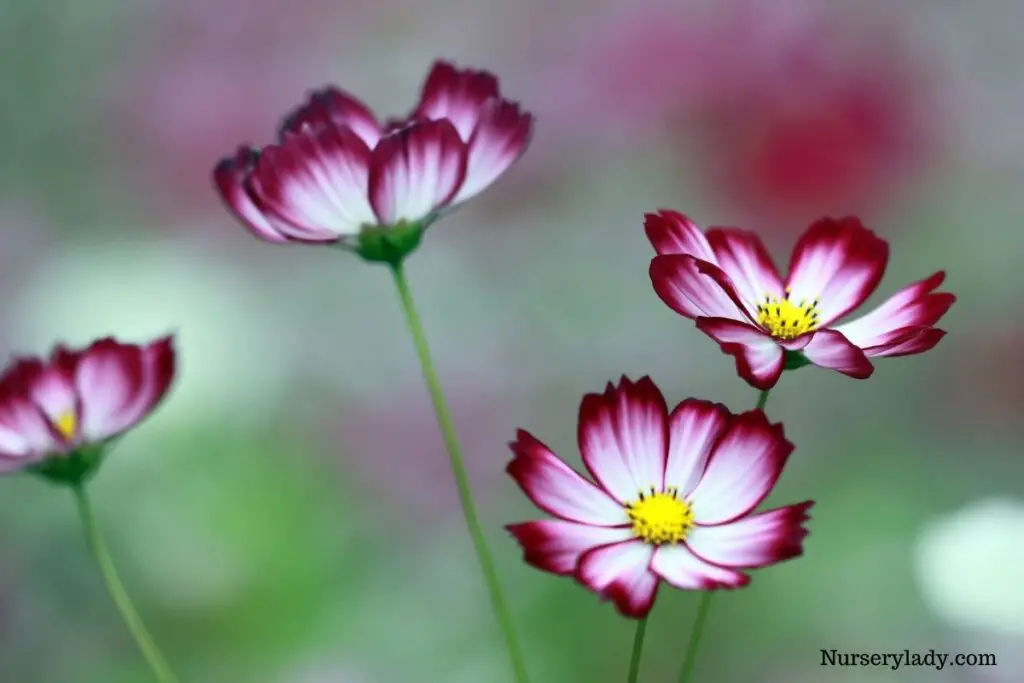
Cosmos are quintessential plants with attractive flowers. They come in various colors and bloom from spring through fall. They can be planted with basil as they both prefer full sun and give a contrasting display.
Light: Cosmos grows best in full sun exposure and can bear full sun in the hottest of summers. In shady locations, they will have fewer flowers.
Watering: Cosmos likes to stay evenly moist. Water them well while they are young and light watering for established plants. They become drought-tolerant once they mature.
Fertilizer: Cosmos grows best without feeding. They can also grow in poor soil without feeding. Feeding can lessen their growth. Feed only if they are struggling.
General care: Cosmos thrives in hot temperatures and all humidity levels. Deadheading will prolong their flowering period.
Spring Crocus
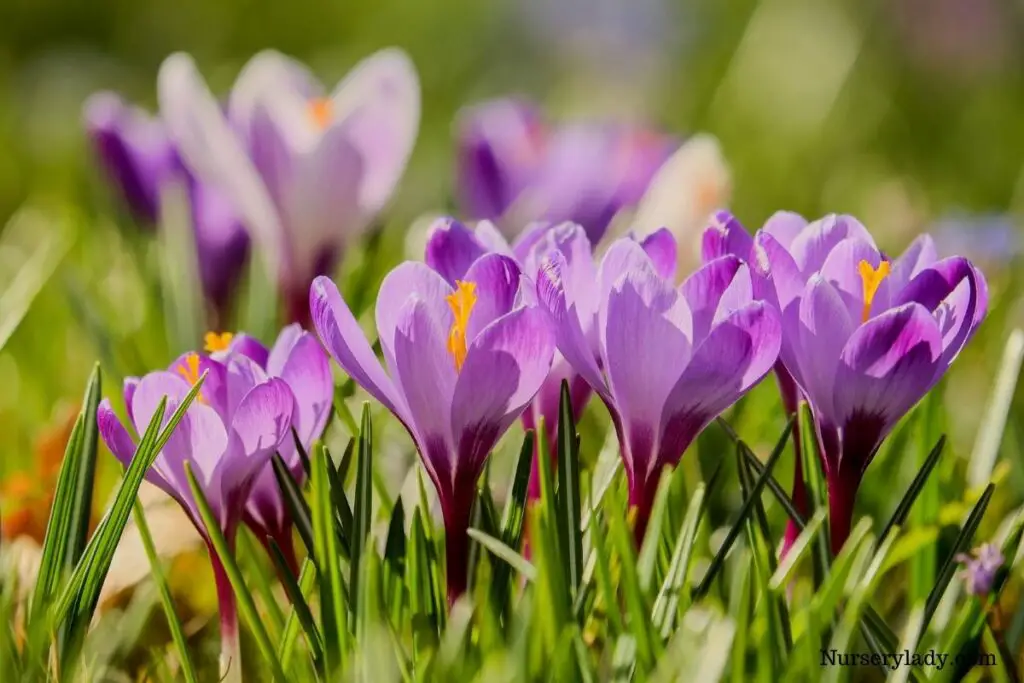
Spring Crocus are early bloomers that bloom in early spring. They come in colors like yellow, lavender, and mauve. You can plant herbs with spring crocus. This will reduce self-sowing and help them look beautiful together.
Light: Spring crocus does best in full sun. However, some shade is appreciated during the intense afternoon sun.
Watering: Water spring crocus when the soil is halfway dry. During the winter, they also need water except when there is snow. Mature plants can withstand short dry periods.
Fertilizer: Feed spring crocus with bulb food or bone meal in the fall. They do not need feeding more than that as they store energy in their bulbs.
General care: Spring crocus bulbs thrive in cold temperatures. They can grow in all humidity levels.
